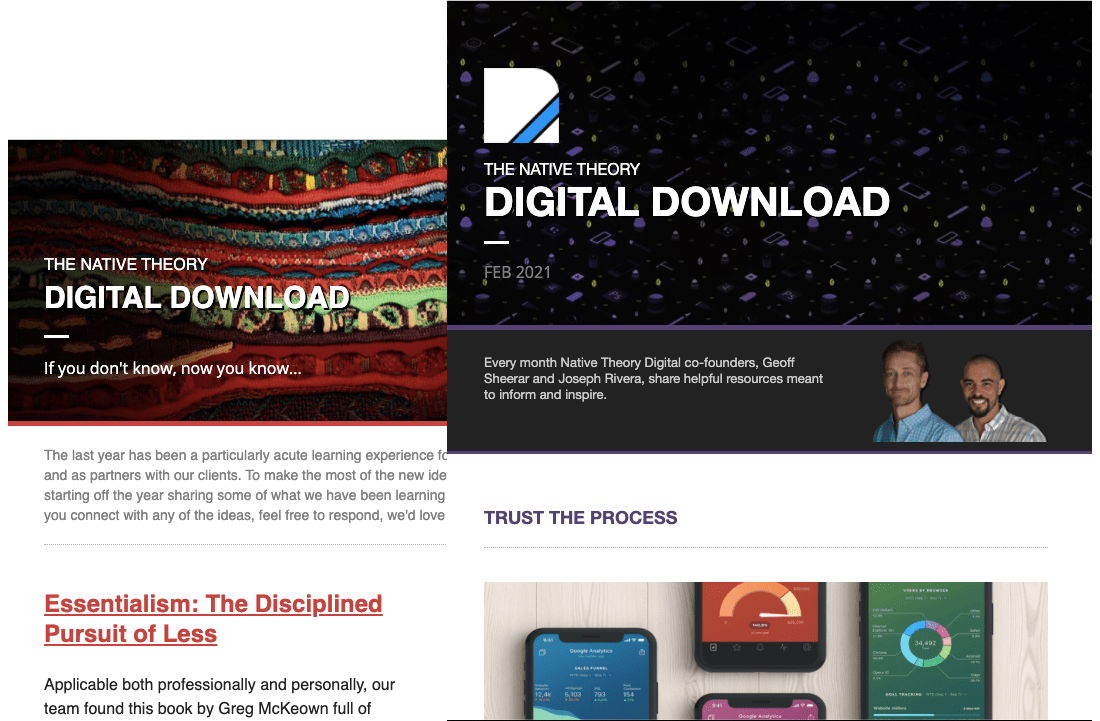In today’s digital age, where first impressions happen in a blink of an eye, your website serves as the nucleus of your online presence. It’s the central hub around which all your online activities revolve. Your website plays a pivotal role in the success of your business as it attracts potential customers, creates connections, and communicates value.
But here’s the thing: web designs are constantly evolving and what was once cutting-edge can quickly become outdated. Staying current and adaptive is not just a suggestion, it’s a necessity.
As you read through this post, we’ll walk you through the important indicators that suggest your website may need a makeover. If you notice any of these signs on your own online space, it might be time to consider a strategic redesign to make sure your website not only meets but surpasses the demands of today’s fast-paced digital world.
Your Website Isn’t Aligned with Your Business Goals
Your website should be like a well-oiled machine, tirelessly working towards your business goals. But what if it’s not? If leads aren’t coming in or sales are slow, it’s time to take a closer look at the important elements on your site like, the functionality of your contact form, the clarity of your value proposition, and how easily visitors can understand and engage with your business.
Consider this scenario: imagine a potential customer visits your website, excited to learn more about your products or services. However, they struggle to find your contact information buried under a pile of content or unclearly presented. Frustrated, they navigate away from your site without taking any action.
Now, picture another scenario: your website inspires trust right from the moment a visitor lands on your homepage. Your contact information is proudly displayed, making it easy for potential customers to reach out to you. Your value proposition is crystal clear, instantly capturing their attention and conveying the benefits of choosing your business.
Making sure your website’s design, functionality, and content align seamlessly with your business objectives sends a strong message to visitors: you’re in control, you understand their needs, and you’re here to help. Take pride in your online presence, treating it as a dynamic platform that highlights your best offerings, always ready to adapt and improve for future success.
Your Website Looks Outdated
Research suggests that a staggering 94% of first impressions are influenced by design factors alone, emphasizing the crucial role of a good looking website. If your website looks outdated or unprofessional, it could be turning away potential customers before they even have a chance to engage with your business. It’s important to regularly update and refresh your website design to keep up with current trends and best practices, ensuring that your online presence accurately reflects the quality of your business.
A useful guideline to ensure your online presence remains fresh is to consider a facelift for your website every two to three years. This could include streamlining the overall design, adding modern graphical elements, or even polishing up the user interface. The ultimate goal is to build a website that effectively showcases the present year and engages visitors right from the start. After all, an up-to-date website not only enhances user experience but also instills confidence in potential clients, demonstrating your commitment to staying ahead in a fast-paced digital landscape.
Your Website Isn’t Optimized for Search Engines
If your website is the nucleus, SEO is the force that draws people into its orbit – and without it, your site is as good as invisible. SEO isn’t a one-off task but an ongoing strategy that evolves with algorithm updates and market changes.
Ongoing SEO work involves regularly revisiting your keyword strategy, updating meta tags, creating fresh content, and ensuring your site architecture is search-engine-friendly. If neglected, your site might just slip into the abyss of the internet – out of sight and out of mind for potential customers.
Your Competitors Have Better Websites
There’s nothing quite as sobering as looking across the digital landscape and seeing your competitors outshining you with sleek, user-friendly websites. But don’t despair. Instead, analyze what they’re doing right – whether it’s a more intuitive layout, faster load times, or stronger SEO strategies – and then integrate these insights into your website’s redesign plan. This isn’t about mimicking; it’s about innovation inspired by the best practices in your industry.
Your Site is Hard to Navigate
Frustration can really affect the user experience, causing more people to leave the site and fewer conversions. So, to ensure users have a seamless journey from start to finish, it’s important for a website to have intuitive design and logical organization that meets their needs.
Improving navigation might mean rearranging content to make it flow better, using clear and compelling calls-to-action to guide users, or rethinking the layout for better usability. By focusing on these things, a website can offer an experience that looks good and helps drive engagement and conversions.
Your Website is Slow
They say patience is a virtue, but not in the world of the web. A slow website can spell disaster for your bounce rates and SEO rankings. The causes of digital sluggishness range from unoptimized images to inefficient code – all of which can be remedied.
Tools like [Google’s Lighthouse](https://developers.google.com/web/tools/lighthouse) can help diagnose speed issues, and a redesign may be the most effective way to address them head-on.
Your Website Isn’t Responsive or Easy to Use on Mobile
We live in a mobile-first world, and if your website isn’t up to scratch on smaller screens, you’re losing out on a substantial market. Responsive design ensures a seamless experience across all devices by adapting to various screen sizes and orientations.
Future-proofing your website against upcoming devices is a savvy move. A redesign now can save you from future headaches and keep your digital presence agile and adaptable – ready to welcome visitors from any device.
It’s Difficult to Make Changes to Your Content
Ever found yourself wrestling with your website just to update a paragraph? That’s a red flag. Your website should have a backend that’s user-friendly – think WordPress, Shopify, or SquareSpace – allowing you to make changes swiftly and ensure your content stays fresh and relevant.
An overhaul of your Content Management System (CMS) can revolutionize your team’s efficiency, allowing them to make updates without the need for advanced technical skills. Plus, integrating with marketing technology and analytics tools can give you invaluable insights into your website’s performance.
Conclusion
The need to redesign your website isn’t just about keeping up appearances – it’s about ensuring that your digital presence is actively helping your business grow. If any of the signs we’ve discussed resonate, it may be time to take action.
A fresh, modern website design is not just a facelift for your brand; it’s a strategic tool that can enhance your visibility, streamline your user experience, and magnify your messaging. What’s holding you back from taking the step towards a transformative digital presence?
If you’re ready to align your website with your ambitions and see genuine growth, reach out for a comprehensive website evaluation or to discuss a redesign proposal. Let’s make your digital nucleus the strongest it can be.



